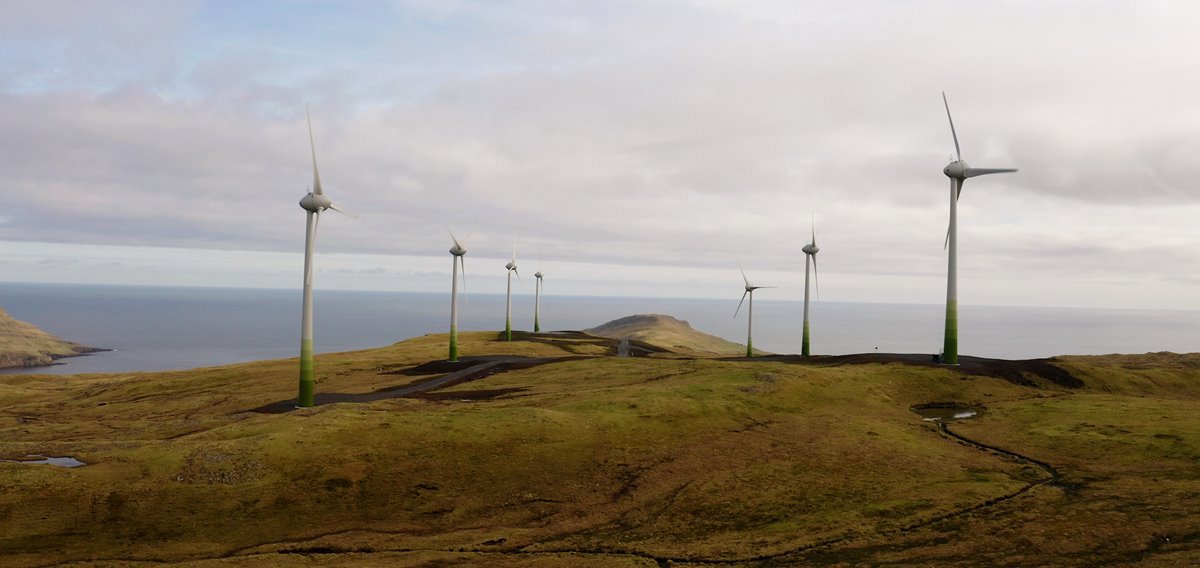40% green energy in the first half-year of 2021

We are using more power than ever before. Within the first half of this year there were produced 202 GWt, which is the most within the first half-year.
Around 81 of these GWt were green energy, which were produced from either water, wind, biogas, or solar energy. The production for green energy was approximately 7% higher than the first half of last year.
It is especially the wind power that has increased, and it is particularly the wind turbines in Porkerishagi, which were not active last year, that make a great difference. The aggregated production of wind power increased 20 percent and was in the first half of 2021 responsible for 14% of the general power production in the Faroe Islands. Biogas contributed to the production with 1,47%, while the power production from water decreased from 26% of the general production to 24% this year. The biogas production from FÖRKA was not counted in the measure of power distribution in the first half of 2020.
The solar energy production is also measured to have had a better first half-year in 2021, compared to 2020. There was an increase of almost 23%. The best day of solar power production was June 25th, when the production reached 2,01 MWt, and thereby scoring the record for solar power production within a day in the Faroe Islands.
The highest producing non-renewable source of energy was oil, which was responsible for around 59% in 2021, compared to 61% of the production last year.
Highest increase in Suðuroy
The demand for electricity in Suðuroy has increased with 14% and is now up on 2,5 GWt, while the assembled production increase for the whole country was roughly 3%. The wind turbines in Porkeri were responsible for approximately 26% of the general energy production, in comparison to 0% the year before, and thereby set the record for the green energy production. Water- and solar power both contributed to the increased green energy production.
The distribution of power production in Suðuroy for the first half-year in percentage was around 68% for oil, 26% for wind, 5% for water and 1% for solar power. This can be compared to a 94% of oil production the year before, and it highlights a change power production in the Faroe Islands.
